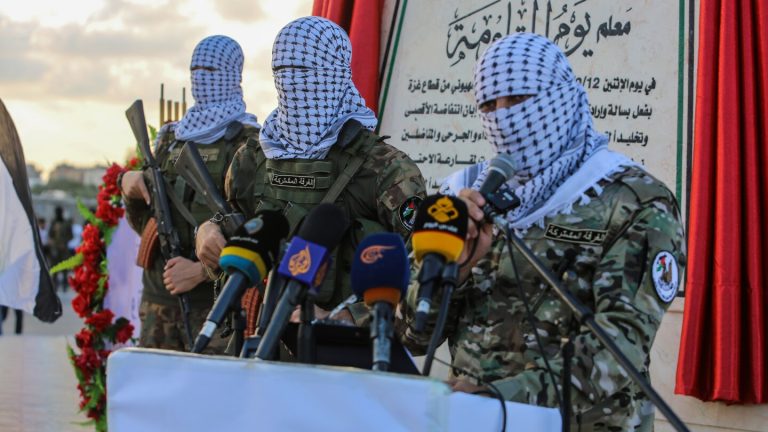Hamas’s Manipulation of Casualty Figures and Media Narratives in the Gaza War
The 2024 Gaza war witnessed intense scrutiny of Israel’s actions, with accusations of genocide echoing in international legal forums and public discourse. A significant factor contributing to this narrative has been Hamas’s strategic manipulation of information, particularly regarding casualty figures and their portrayal in international media. Research indicates a deliberate effort by Hamas to inflate civilian casualty numbers while obscuring its own combatants’ deaths, effectively shaping global perceptions of the conflict and fueling accusations against Israel. This manipulation occurs through various methods, including misclassifying combatants as civilians, incorporating natural deaths into conflict statistics, and altering demographic data to emphasize women and children casualties.
A report by the Henry Jackson Society, "Questionable Counting," meticulously analyzes the Gaza Ministry of Health (MOH) data, revealing significant inconsistencies and potential misrepresentations. The MOH, operating under Hamas’s control, cannot be considered an impartial source. Yet, its figures are widely disseminated in international media without adequate scrutiny. The report highlights instances of misclassification – men recorded as women, adults listed as children, and even individuals in their twenties and thirties documented as infants. These inaccuracies, whether deliberate or accidental, raise serious concerns about the data’s reliability. The MOH data also disproportionately emphasizes women and children casualties, contrasting independent analyses of Hamas’s own figures indicating that the majority of fatalities are fighting-age males, aligning with Hamas’s documented use of child soldiers. The report further reveals the inclusion of natural deaths and deaths caused by internal Hamas violence or misfired rockets in the conflict’s casualty figures.
Hamas’s strategy extends beyond manipulating casualty figures. The organization deliberately embeds its military infrastructure within civilian areas, using hospitals, schools, and residential neighborhoods to shield combatants and store weapons. This tactic, often described as a human shield strategy, blurs the lines between civilian and military targets, increasing the risk of civilian harm during Israeli counter-operations. These resulting civilian casualties are then exploited to accuse Israel of indiscriminate attacks, further fueling the distorted narrative and diverting attention from Hamas’s role as an active combatant.
The second part of the investigation focused on media coverage of the conflict, analyzing articles from major outlets like CNN, BBC, The Washington Post, The New York Times, The Guardian, ABC Australia, Reuters, and the Associated Press. The study, conducted by Fifty Global using Open-Source Intelligence (OSINT) methodologies, reveals a systematic bias in reporting. A startlingly low percentage of articles mentioned militant casualties or acknowledged that the MOH’s figures do not distinguish between combatants and civilians. This omission creates a misleading narrative that portrays Israel as targeting civilians rather than engaging in combat against a terrorist organization. Furthermore, the study highlights the uncritical acceptance of Hamas’s casualty figures by many media outlets, with some even presenting them as "common knowledge" without attribution. This contrasts sharply with the skepticism often applied to IDF figures.
The study identifies several contributing factors to this bias. The term "Ministry of Health" lends an air of legitimacy to Hamas’s data, while an unfounded belief in the historical accuracy of Hamas’s reporting persists despite evidence to the contrary. This reliance on past perceptions rather than rigorous verification allows misinformation to propagate. The analysis also exposes the disproportionate reliance on Hamas as a source of information compared to the IDF, further skewing the narrative. This imbalance contributes to the creation of an “authoritative version of reality,” where the media’s selective representation of information shapes public understanding and even influences policy decisions.
The consequences of this skewed reporting are significant. The distorted narrative of the conflict misrepresents its complexities and fuels accusations of genocide against Israel. The uncritical acceptance of Hamas’s casualty figures and the downplaying of Hamas’s role as an active combatant hinders efforts to understand the conflict’s true nature and achieve lasting peace. This distorted portrayal can also influence international legal proceedings and fuel movements like BDS, demonstrating the real-world impact of media bias.
The Gaza conflict highlights the intricate interplay between violence, information warfare, and media representation. Hamas’s manipulation of casualty figures and its exploitation of civilian infrastructure significantly impact public perception. The media’s uncritical acceptance of Hamas’s narrative and its failure to provide a balanced and nuanced portrayal contribute to a distorted understanding of the conflict. Addressing these issues requires rigorous data verification, adherence to journalistic standards, and a commitment to presenting diverse perspectives. Only through accurate and balanced reporting can the international community gain a comprehensive understanding of the conflict and work towards informed solutions. This conflict serves as a stark reminder of the media’s critical role in shaping public understanding and the devastating consequences of biased reporting.


